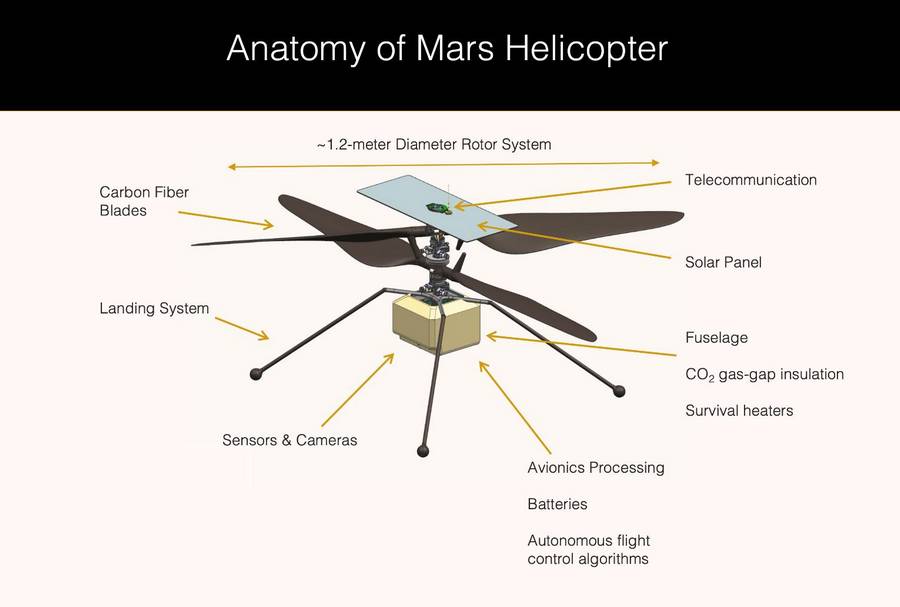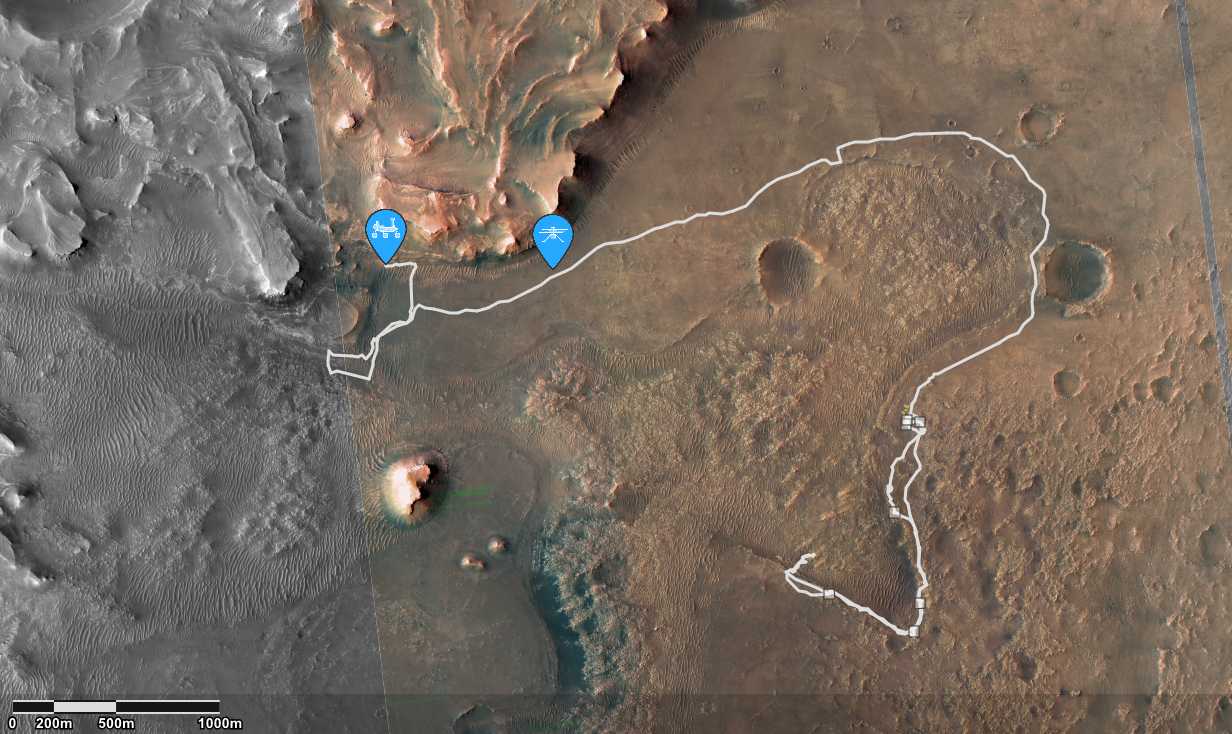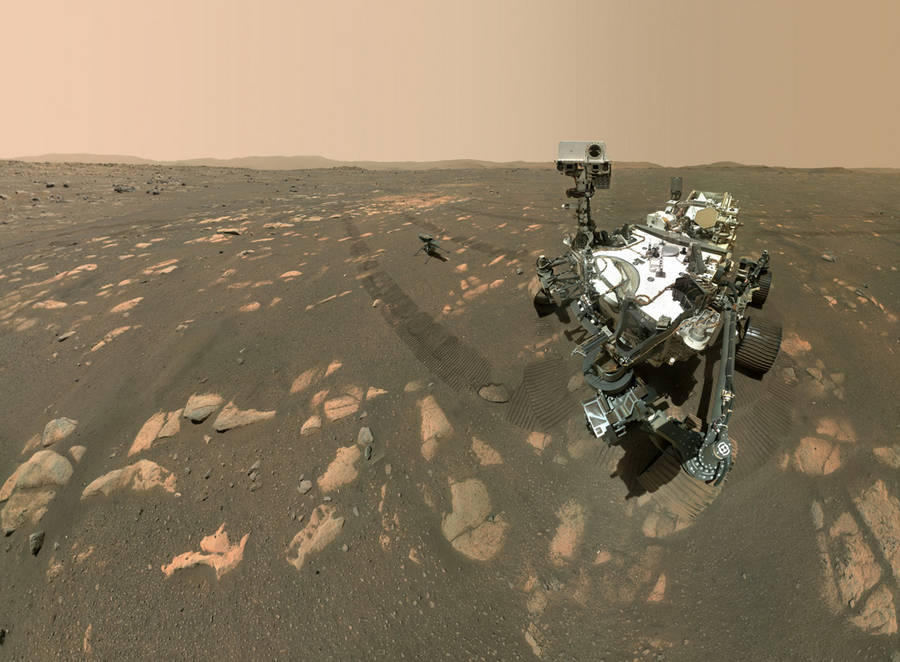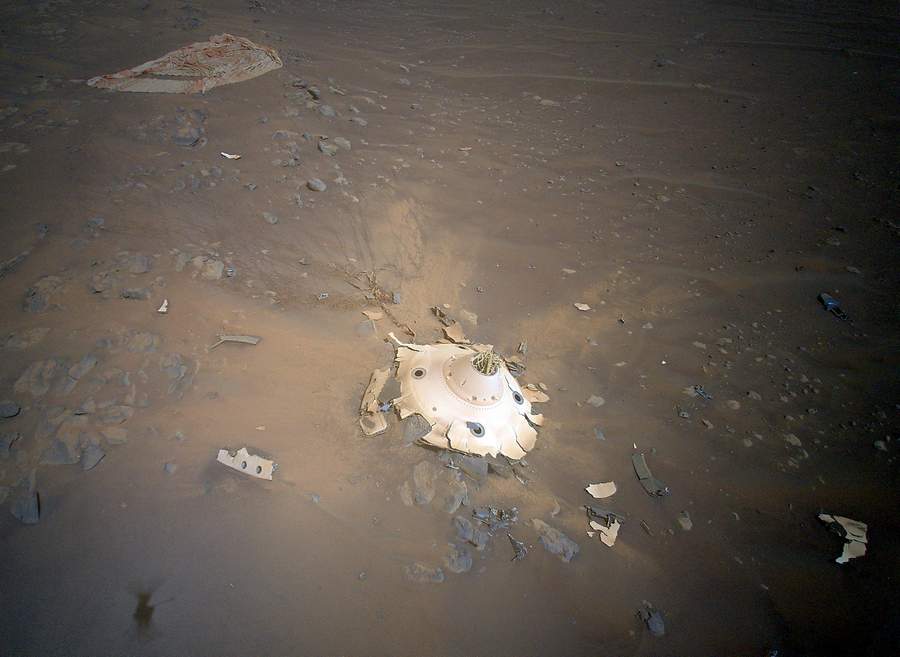NASA’s Ingenuity Mars helicopter is still operational after over a year on our neighbouring planet, proving its worth with invaluable photos!
The Ingenuity helicopter landed on Mars on the 18th of February last year, aboard the Perseverance rover. It then unfolded itself from under the rover, as its crew prepared it for its first flight. This came on the 19th of April 2021. Visually, it was just a short vertical lift manoeuvre and hover. But it made Ingenuity the first aerodynamically flying vehicle to take off in another world.

As we’ve previously seen, NASA’s helicopter was only supposed to be a demonstrator. OK maybe the NASA/JPL team played down expectations, a bit. But the stated goal of the program, in the “sky is the limit (literally)” scenario, was to perform five trouble-free flights, in just over a month. The little helicopter has now flown 27 times. Its longest flight covered a distance of 704 metres (2,310 feet)! It has covered 6.9 km (4.2 mi), in over a year.
These are amazing numbers for a solar-powered helicopter, flying in such a thin atmosphere. As we’ve seen, Ingenuity now has a different mission. The helicopter is now actively supporting the efforts of NASA’s Perseverance rover, as it explores Mars’ surface. Ingenuity can scout areas that the Perseverance team is considering visiting.

In Two Places At Once
And just as importantly, Ingenuity can actually make some visits to some areas of less interest unnecessary. It can simply fly there and take photos for the team instead! The picture above shows exactly such an area. It is an intriguing ridgeline, near what once was a river delta. Even though the Perseverance rover won’t go there, its team wanted a closer look at those details.

NASA’s helicopter obliged. If some people thought the vehicle was a gimmick, it is proving them wrong. Caltech’s Ken Farley, Perseverance’s project scientist, said:
“Ingenuity not only provides imagery from an aerial perspective, but allows our team to be two places at once on Mars. Sending the rover to survey and prospect in one location while launching the helicopter to survey another hundreds of meters away is a great time-saver. It can also help us explore areas the rover will never visit, as in this case.”

Originally, even NASA’s best estimates about the longevity of the helicopter foresaw another obstacle. At some point, it would fall behind the Perseverance rover. The Ingenuity helicopter needs somewhat lengthy periods between flights, to recharge its batteries. But the rover can only wait for it for so long. However, the rover doesn’t really drive in a straight line.
NASA’s Helicopter Is Keeping Touch
So as it turns out, the helicopter can keep up with the rover. And of course the versatility it adds to the rover team means that it is worth waiting for. But the helicopter also needs to brave the conditions on Mars. Not only is it much colder there, but sand storms can reduce the precious little sunlight it can use to recharge its batteries. Early in May, NASA’s Ingenuity team lost contact with their helicopter for the first time in a year.

A sand storm had caused the helicopter’s batteries to run low. As a precaution, Ingenuity automatically put itself in hibernation, to conserve energy. Fortunately, its battery reserves have since been rising again. And of course, as the team builds experience, it can learn how to utilize the helicopter’s energy better. This is especially important when it comes to providing heat for its batteries, during cold Martian nights.
Finally, NASA’s helicopter has also taken some photos of the equipment used to bring it to Mars (see below). These images are extremely important to NASA engineers, who are planning a sample return mission. This should pick up samples that the Perseverance rover has recovered, to return them to earth.

The helicopter’s success means that future Mars rovers will almost certainly incorporate similar or better flying machines. As a proof-of-concept device, Ingenuity’s cameras and other gear are relatively basic. So what would a future Mars helicopter look like?




1 comment
B-Frank
The hoppers flight- and propulsion physics are the most thrilling aspect of the missions tech to me. I hope someone does the math for us before the drawings eventually join the SaturnV papers😉…
Rotary wing/battery driven, tiny solar panel, low sun irradiation, a mere 1/100 of earthly SL air pressure are a spectacular envelop for an aircraft.
The spin-off in engine efficiency will leap-frog us into the twentysecond century!🙃!